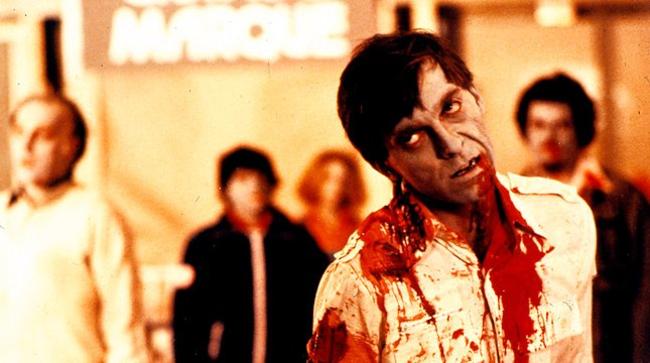
The pop culture phenomenon known as the zombie apocalypse has reached global fanfare over the last two decades. The revival started in the 90s with the “Resident Evil” video game franchise, continuing up to present day with the comic book turned AMC television series “The Walking Dead”, which has knocked out the competition by becoming one of the most popular shows in ratings over the last couple of years.
The literary world and Hollywood have also felt the impact of undead best-selling novels, such as “Pride and Prejudice and Zombies” and “The Survival Guide to the Zombie Apocalypse”, have captivated readers, along with movies like “Zombieland” and “World War Z” performing exceptionally well at the box office.
It seems like the audience’s appetite for all things zombies is far from waning. It’s even been widely reported by several mainstream news outlets that the US military and many academic institutions have planned for and studied the viability of surviving a real-life zombie apocalypse.
The unquenchable fascination with zombies can be traced back to the groundbreaking horror film “Night of the Living Dead”, directed by George A. Romero and released in 1968. It was a game changer in the horror genre, introducing the world to the undead flesh eaters that can only be stopped with a bullet or a blunt instrument strike to the head.
The low-budget horror film was shot in black and white on a $114K budget and became a huge hit, grossing $12 million at the box office. Additionally, the film was a trailblazer because the lead actor and hero in the film was African-American, something you practically never saw in movies through the 60s. The movie was also selected by the Library of Congress to be preserved in the National Film Registry because of its cultural and historical significance.
In the late 70s, Romero would return to the undead saga with help from legendary Italian film director Dario Argento, who helped secure financing for the film in exchange for international distribution rights. Argento also wanted to edit the European version of the movie. His involvement helped make the sequel a reality and once the deal was made, Romero wrote the screenplay for the film in Rome, often collaborating with Argento on the story development, and “Dawn of the Dead” was finally released in 1978.
The sequel was the quintessential 70’s horror film filled with violence, realistic gore, and political and social undertones, and the iconic movie poster of a decomposed zombie face doubling as the sun rising at dawn was horrifying. The budget for the movie was $1.5 million and it would go on to gross $55 million at the box office, becoming another commercial hit for Romero.
Critics also loved the film as well. Roger Ebert had this to say about it: “‘Dawn of the Dead’ is one of the best horror films ever made — and, as an inescapable result, one of the most horrifying. It is gruesome, sickening, disgusting, violent, brutal and appalling. It is also (excuse me for a second while I find my other list) brilliantly crafted, funny, droll, and savagely merciless in its satiric view of the American consumer society. Nobody ever said art had to be in good taste.”
After the release of the sequel, anything relating to the zombie apocalypse borrowed heavily from “Dawn of the Dead”, making it the most influential and greatest zombie movie of all time.
1. The end of the world
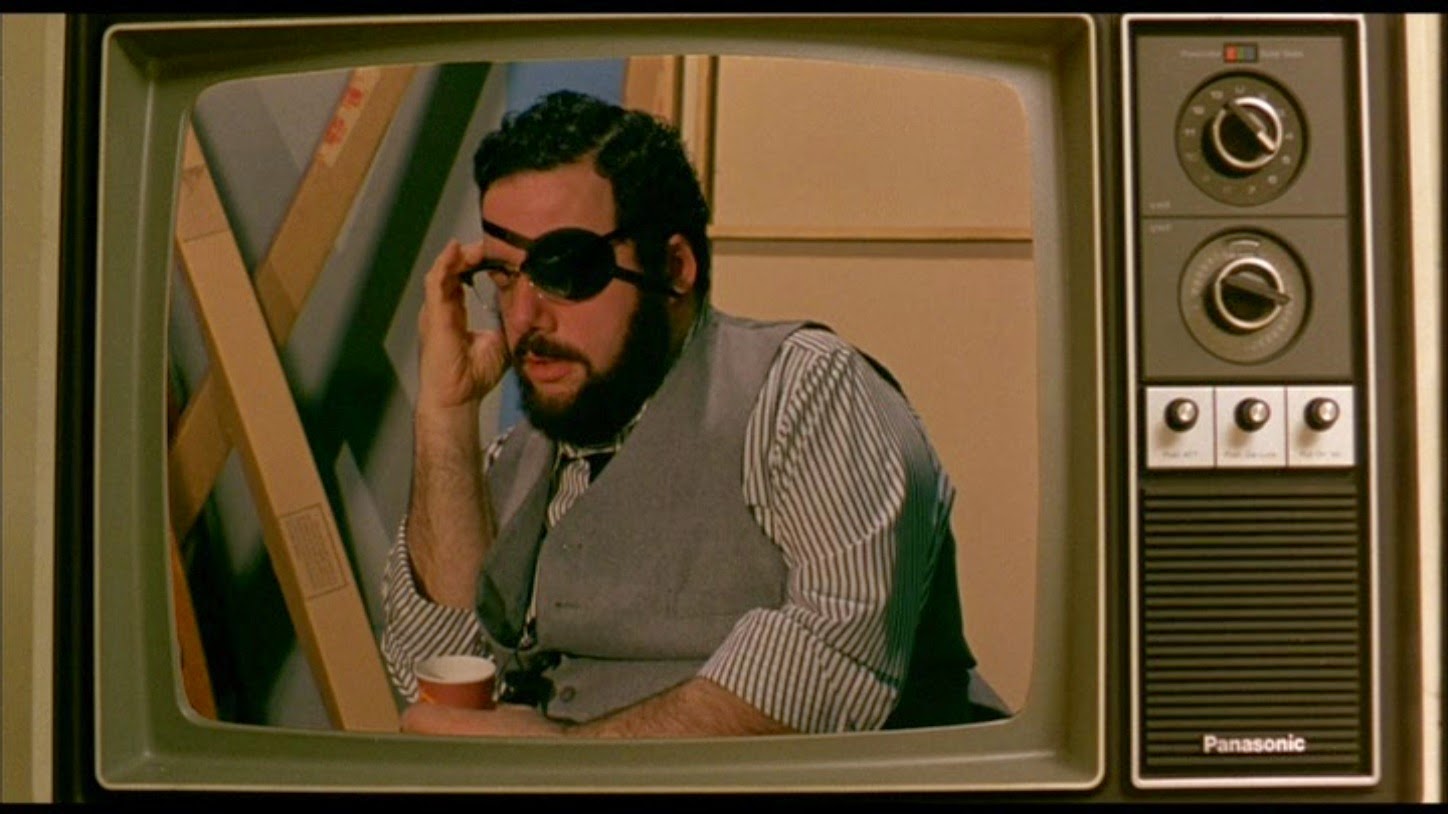
“Dawn of the Dead” captures the collapse of society in a realistic and unflinching approach, which brings the audience into the world of the zombie apocalypse in real time. The movie begins during the live broadcast of a news program that relays important information to the public.
Everything is breaking down; crew members are abandoning their posts, and the other staff that remains are heckling and questioning a doctor about the facts he’s presenting to the public on live television. Civilization is falling apart and it’s being broadcasted for all the world to see. Romero used news broadcasts throughout the film as a countdown to the complete deterioration of society.
As a group of survivors take up refuge inside a shopping mall, they watch the emergency news broadcast where an eyepatch wearing scientist is advocating feeding the zombies in order to survive. In the last news broadcast, the host is drinking a bottle of hard liquor live on air and the scientist is now advocating using nuclear weapons on the densely populated cities to help stop the zombie apocalypse.
When the news broadcast finally stops for good, we know civilization has completely collapsed. Romero skillfully uses the news broadcast throughout the film to show the demise of humanity because we as a society rely too much on broadcast news for all our information, and watching the sporadic live news coverage throughout the film is disturbing because it’s a good chance that many people in real life would be glued to their television sets waiting for breaking news, instead of trying to flee and survive the zombie onslaught.
Romero also juxtaposes the fall of civilization on two fronts – one urban and the other rural. In a housing project, the undead are attacking the living and a SWAT team rushes in to restore order. The madness going on inside the projects causes SWAT team members to turn on one another, resulting in a murder while other officers commit suicide as the zombie apocalypse becomes too much for some officers to stomach.
While in a rural setting where the Second Amendment rules supreme, hunters are out shooting zombies and having a good time, but the lack of respect these hunters have for these undead creatures will be their demise and the audience soon realizes that rural America will fall just like the cities, because as history has shown us throughout the ages, no one is immune when it’s time for a civilization to collapse.
2. Walking dead
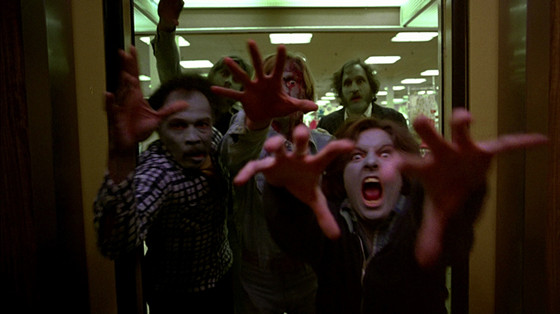
When there’s no more room in hell, the dead will walk the earth. This film, which is even better than its predecessor “Night of the Living Dead”, created the template for the zombie mythology in pop culture. From the decomposing and rotting skin of the zombies; the brutality of the kills where zombies will bite, tear and rip at human flesh for food; or the slow rigamortis stroll of the zombie, it all was perfected in the original “Dawn of the Dead”.
When Romero made “Night of the Living Dead”, he didn’t consider them zombies; in the director’s mind they were dead bodies that reanimated to life. But critics and audiences would soon give the monsters he created the title of ‘zombie’ and the concept he came up with in the late 60s is still entertaining and scaring audiences to this very day.
However, the major difference between the stories that Romero created and today’s zombie entertainment is that Romero’s movies were full of subtle political and social messages, while today’s zombie stories are just mindless entertainment.
Romero described the “The Walking Dead” as a soap opera with the occasional zombie; he also wasn’t a fan of the “Dawn of the Dead” remake or Brad Pitt’s “World War Z” for that manner, feeling that they lacked substance. Obviously, the godfather of the zombie genre is not too impressed with the modern-day take on the genre he created so many decades ago.
3. George A. Romero
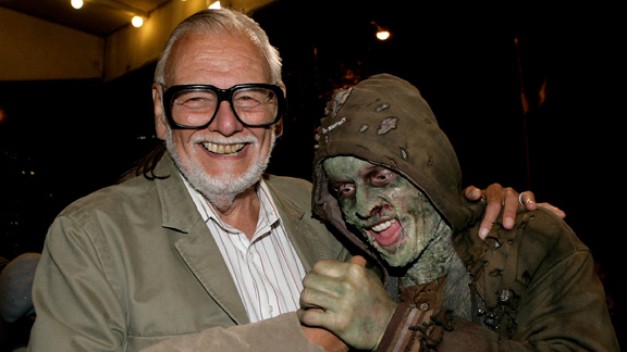
Romero started out working as a commercial director based in Pittsburgh before releasing “Night of the Living Dead”, and would go on to become one of the most important horror directors in the genre. Romero described his style in the following statement about making movies: “What you’re doing on the surface is making a comic book.” His movies would become the cinematic equivalent of the “Tales from the Crypt” comic books that were popular in 1950s.
In pre-production, Romero wrote extremely long screenplays full of detail; during actual production, he would always shoot extensive footage; and in post-production, he did all the editing himself, doing rapid cuts where no shot lasted longer than 10 seconds. He rarely moved the camera or did dolly shots, relying on the editing to tell the story.
Romero didn’t just make horror movies; often times his films had messages about the human condition. “The Crazies”, released in 1973, was a cautionary tale of an out-of-control military industrial complex and mass hysteria, and his 1978 film “Martin” explored themes of stalking, escapism, and mental illness. However, his greatest accomplishment is how he created the zombie genre, which has stayed in pop culture for years and is showing no signs of disappearing from the entertainment landscape.
4. Tom Savini

His bloody recreations of brutality and murder gave all the films Tom Savini worked on an intense sense of realism. Known as the ‘Sultan of Splatter’, Savini did special effects work on such films as “Friday the 13th” (creating the Jason Voorhees makeup that emerges from the lake at the end of the movie), “Manic”, “Creepshow”, “The Texas Chainsaw Massacre 2”, “Day of the Dead”, and is such a icon in the business that he appeared on “The Simpsons” playing himself. Many moviegoers might also recognize him playing the character Sex Machine in the movie “From Dusk Till Dawn”.
Savini served in the Army and did a tour in Vietnam working as a combat photographer. His experience capturing the horrors of war would translate to his future work in special effects, enabling Savini to create some of the most realistic gore special effects captured on film.
His work on “Dawn of the Dead” was brutal and jaw-dropping; one of the first effects in the film that was shocking appears when a SWAT officer blows off a man’s head with a shotgun and Savini actually shows a human head exploding. The special effect is graphic, shocking, and and most of all, realistic.
Savini created the makeup for hundreds of extras playing zombies and also doubled as a stuntman and actor in the film, but his work on “Dawn of the Dead” would influence and usher in a decade of horror movies full of gory special effects, earning Savini his second nickname, ‘The Godfather of Gore’.
5. A commentary on consumerism

Romero said he wanted to expose the false security of the consumer society with “Dawn of the Dead”, and there’s no coincidence that the majority of the film takes place inside a shopping mall.
The four main characters in the movie – a female news producer named Francine, her boyfriend Stephen who works for the news station as an helicopter pilot, and two SWAT officers named Peter and Roger – escape the chaos of the undead by stealing the news station’s helicopter in search of a safe refuge. They stumble across an abandoned shopping mall and after securing the mall, preventing the zombies from entering and killing off the remaining zombies roaming inside the mall, the huge building becomes their home.
As the world is collapsing, the four survivors take comfort in the material trappings left behind inside the mall. They dress up in fancy clothes (even though there is no one around to admire their new attire), wear expensive jewelry, eat some of the best food left behind at the restaurants, and by taking everything they ever wanted inside the mall and by becoming consumers instead of survivors, the material distractions numbs their pain as everything falls apart around them.
Romero brilliantly satirizes modern-day society by showing how consumerism is the greatest addiction known to man, and the zombies wandering around through the shopping mall is actually us – we are the brain-dead zombies and instead of feeding off of human flesh, we feed off of consumerism for our sustenance.
6. Survival
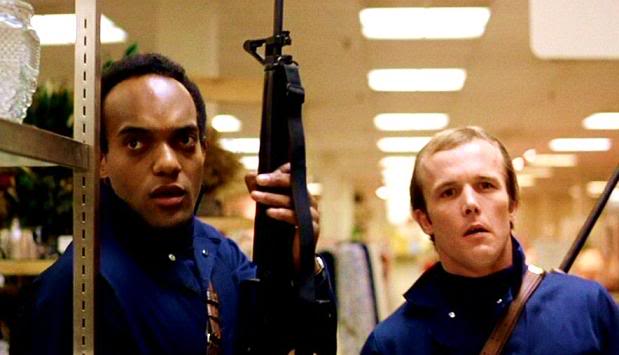
At the end of “Dawn of the Dead”, Peter and Francine are the last two survivors and the zombies have overrun the shopping mall, and are heading toward their hiding place. Francine has learned how to fly the helicopter during their stay at the shopping mall and wants to escape, but Peter has had enough and wants to end it all by committing suicide.
Francine heads to the helicopter while Peter plans to shoot himself in the head, but at the last moment besieged by the undead zombies, Peter changes his mind and fights his way through the zombies, making it it to the helicopter just in time as he and Francine fly off into the unknown.
The most constant theme in all of Romero’s zombie movies is survival. The zombies could represent our fears of death, and the fight against the zombies could represent man’s constant struggle against one’s own mortality.